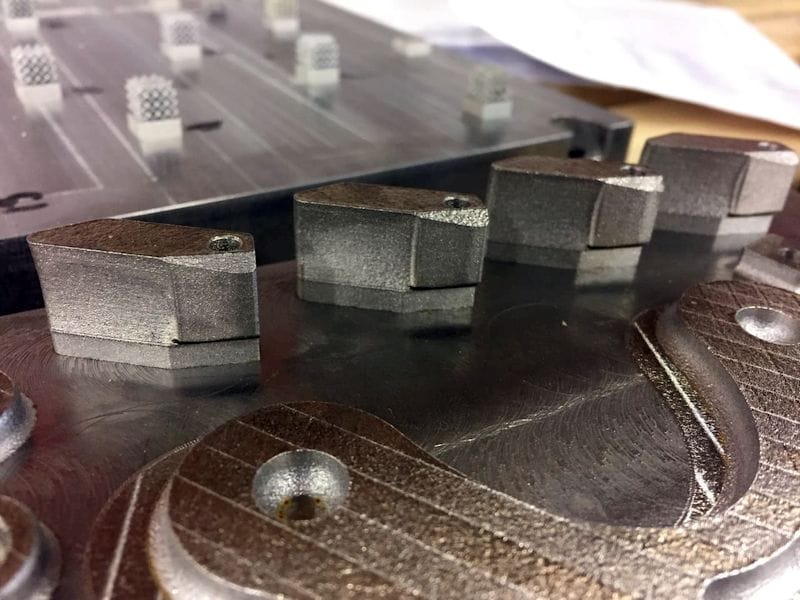
It’s time to find out how you’re using 3D metal printing technology.
Over the past couple of years there has been a rather dramatic change in the use of 3D metal printing technology. Yes, the equipment has been available for quite a few years, but it’s only recently that a larger number of companies have “turned on” to the notion that 3D printing in metal could have huge benefits to their business operations.
Some companies have discovered they can completely redesign parts without the unsaid constraints of older making technologies, and that freedom has resulted in radically new designs that offer performance characteristics previously considered impossible.
Lighter parts, stronger parts, fewer parts are but some of the advantages discovered by many companies.
But there’s another change, particularly in the last year or two: the cost of 3D metal printing is beginning to come down. For years the standard approach to 3D metal printing involved some form of powder-bed fusion, typically with a powerful laser fusing shapes out of precise metal powder by moving a meltpool around the build chamber.
This approach was quite functional, but was (and is) significantly expensive, leaving its use financially viable only for those few industries whose part cost justified the use. Costs associated with 3D metal printing sometimes exceed the costs of the 3D metal printer itself. Even the specialty powders used are quite expensive.
In the past year or two we’ve seen several companies introduce new types of 3D metal printers that are considerably less expensive to operate than the so-called traditional 3D metal printers we’ve seen over many years. These new approaches, such as that from Desktop Metal or Markforged, lower the price of entry to levels that should justify use by a vastly greater number of participating companies. Perhaps the parts produced might not meet aerospace regulatory standards, but there are still many industries where such parts would be quite useful.
Thus we should see a boom in 3D metal printing over the coming years.
But with all these new folks entering the market, what problems are they encountering? What issues and solutions should 3D printer manufacturers focus on? What should third party software and hardware providers attempt to resolve?
I don’t know the answers to these questions.
That’s why we’ve come up with a survey, intended for those involved in 3D metal printing, to provide some answers.
If you are working in 3D metal printing or hope to do so, we’d truly appreciate your thoughts in our quick, multiple-choice survey. Sorry, there’s no prize for participating, but be certain we will analyze the results and publish what we find in a future post.
The survey is available here, and we’ll keep it open until April 15th to capture all the responses.
Thanks for participating!

